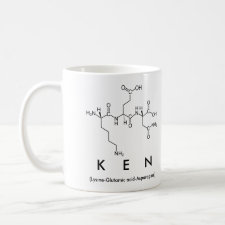
Authors: Song D, Zhang YG, Geer MF, Shimizu KD
Article Title: Characterization of molecularly imprinted polymers using a new polar solvent titration method.
Publication date: 2014
Journal: Journal of Molecular Recognition
Volume: 27
Issue: (7)
Page numbers: 448-457.
DOI: 10.1002/jmr.2365
Abstract: A new method of characterizing molecularly imprinted polymers (MIPs) was developed and tested, which provides a more accurate means of identifying and measuring the molecular imprinting effect. In the new polar solvent titration method, a series of imprinted and non-imprinted polymers were prepared in solutions containing increasing concentrations of a polar solvent. The polar solvent additives systematically disrupted the templation and monomer aggregation processes in the prepolymerization solutions, and the extent of disruption was captured by the polymerization process. The changes in binding capacity within each series of polymers were measured, providing a quantitative assessment of the templation and monomer aggregation processes in the imprinted and non-imprinted polymers. The new method was tested using three different diphenyl phosphate imprinted polymers made using three different urea functional monomers. Each monomer had varying efficiencies of templation and monomer aggregation. The new MIP characterization method was found to have several advantages. To independently verify the new characterization method, the MIPs were also characterized using traditional binding isotherm analyses. The two methods appeared to give consistent conclusions. First, the polar solvent titration method is less susceptible to false positives in identifying the imprinting effect. Second, the method is able to differentiate and quantify changes in binding capacity, as measured at a fixed guest and polymer concentration, arising from templation or monomer aggregation processes in the prepolymerization solution. Third, the method was also easy to carry out, taking advantage of the ease of preparing MIPs. Copyright © 2014 John Wiley & Sons, Ltd
Template and target information: diphenyl phosphate
Author keywords: Molecularly imprinted polymers, association constants



Join the Society for Molecular Imprinting

New items RSS feed
Sign-up for e-mail updates:
Choose between receiving an occasional newsletter or more frequent e-mail alerts.
Click here to go to the sign-up page.
Is your name elemental or peptidic? Enter your name and find out by clicking either of the buttons below!
Other products you may like:
 MIPdatabase
MIPdatabase









